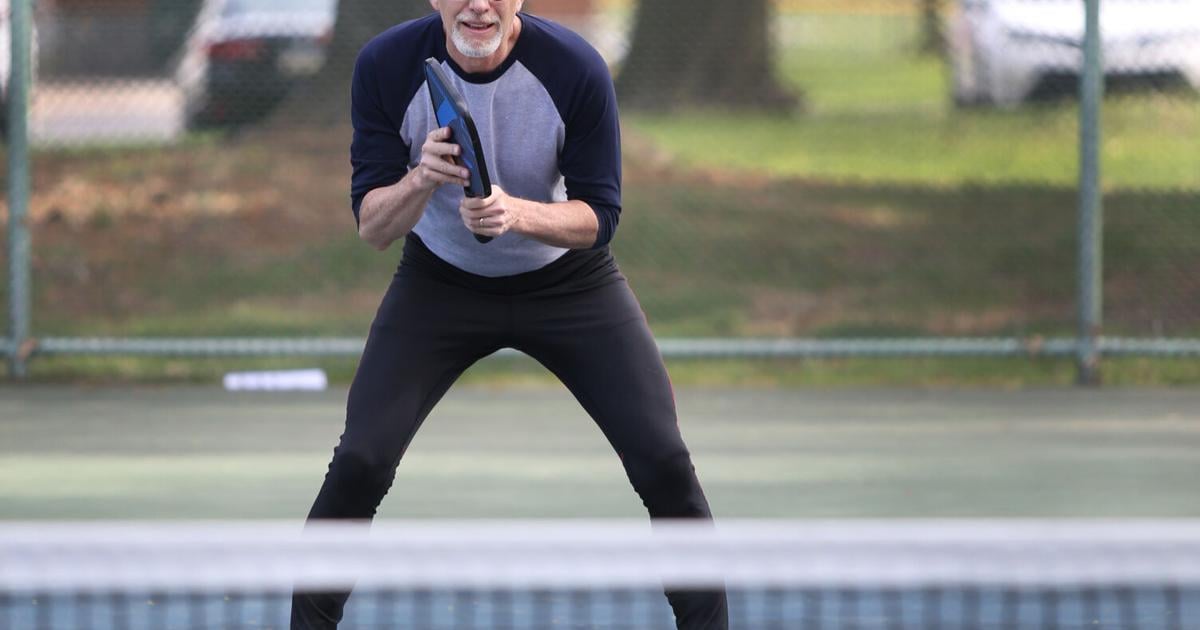
Doctor guides patients on how to age well
As head of the geriatrics division at Penn Medicine Lancaster General Health Physicians Geriatrics, Kraybill faces aging day by day. It deals with those with more complicated medical conditions, many of whom have a short period of time until the end of life. Over the years, more than a few have been a kind of role models to follow, which have helped him figure out how he could approach his own aging and death.
However, caring for those closest to the end of life was not how he began his career.
Kraybill grew up in Elizabethtown and jokes that he didn’t get very far in life (physically, that is) because he still practices medicine in his hometown. After earning a bachelor’s degree in medicine from Temple University, she did her family internship at LGH.
“I chose to specialize in family medicine after college because I admired the family medicine doctors I met,” he says. “I found them to be accessible and real people who care deeply about their patients.”
He also liked the fact that GPs deal with various medical issues and see the connection between medical and emotional health, he says.
However, working with elderly elderly patients inspired Kraybill to make a career change 20 years ago and seek additional training through a geriatric fellowship at LGH. The shift to geriatrics placed him in a relatively small fraternity in the medical world. There are currently fewer than 8,000 geriatricians in the United States, a somewhat surprising statistic considering the U.S. Census Bureau’s projection that older adults will outnumber children for the first time in U.S. history on 2034.
“Historically, geriatric care is neither sexy nor prestigious,” says Kraybill. “There’s the stereotype of the elderly as complaining and complicated and all you’re doing is managing the intestinal medications. That sometimes doesn’t appeal to younger doctors.”
And it’s not true either, he says.
Geriatrics is more than just treating multiple medical conditions such as hypertension, diabetes and heart disease. It is about treating patients and their families as individuals, he says, and recognizing that their health includes not only medical conditions, but also mental health and psychosocial problems. Geriatrics also deals with unforeseen opportunities, says Kraybill, and noted that he became an expert in clinical infectious diseases thanks to COVID-19 and its effect on the elderly population.
“Patients rarely expect him to work miracles and cure them of their illnesses,” says Kraybill. “Instead, they want to know what’s going on, what the realistic expectations are, where they need to look for care and recovery, and where they need to accept what it is. They mostly want someone who can look them in the eye honestly and respectfully. and guide them on how to approach life and health. ”
All residents of the Lancaster General Health family practice are now overshadowing geriatricians in their second year of training so they can see how rewarding, and even fun, this field of medicine can be. The practice of geriatrics currently has 16 geriatricians, an unusually high number for community practice, he says.
That’s not enough to take care of all 80 years of Lancaster County, Kraybill says. Again, not all 80-year-olds need geriatric practice.
So who should see a geriatrician?
“It’s less defined by age than by conditions and fragility,” Kraybill says. “We have 85-year-olds who are happy and alive and not very complicated. And we are about 55 years old who are physiologically aged. … Not everyone at the age of 68 has to go see a geriatrician. ”
Kraybill’s practice focuses on complicated, fragile people who require more care and often fall through the cracks in standard medical practice. Instead of using age as a criterion, practice has more of a screening protocol. They study issues such as whether a patient has more difficulty getting into a car or an elevator; if dementia sets in and complicates their ability to take medication, care for themselves, and communicate; if they have multiple medical problems or hospital stays.
“When all of these things start to pile up on top of each other … it’s often appropriate,” he says. “When you’re in a moment in life where you say,‘ I love life. I don’t want to give up life. It’s getting really difficult … I’m looking for ways to make the transition to more comfort and palliative care. ”
Kraybill acknowledges that many who fall into this category may already have wonderful family physicians treating elderly patients, and should stay with that care. It all depends on the individual.
In the practice of geriatrics, routine visits usually last longer and include broader discussions about whether to continue or discontinue medications, as well as advanced care planning.
No matter how hard Kraybill tries to comfort and guide his elderly patients as they try to make the best decisions in life, they have given him something in return. Throughout his career, he has observed those ahead of his life, observed how they have handled the challenges of aging, and learned.
“I think my plan is to fight hard for my health and try to stretch and maintain it and do everything I can to be independent, committed and participatory,” he says. “My patients have taught me a lot about accepting what it is. I have seen people deal with great suffering with great dignity. My goal at this point in life is to reflect on them and walk gracefully through the end of life with the greatest possible connection to the people I love around me. “

Comments are closed.